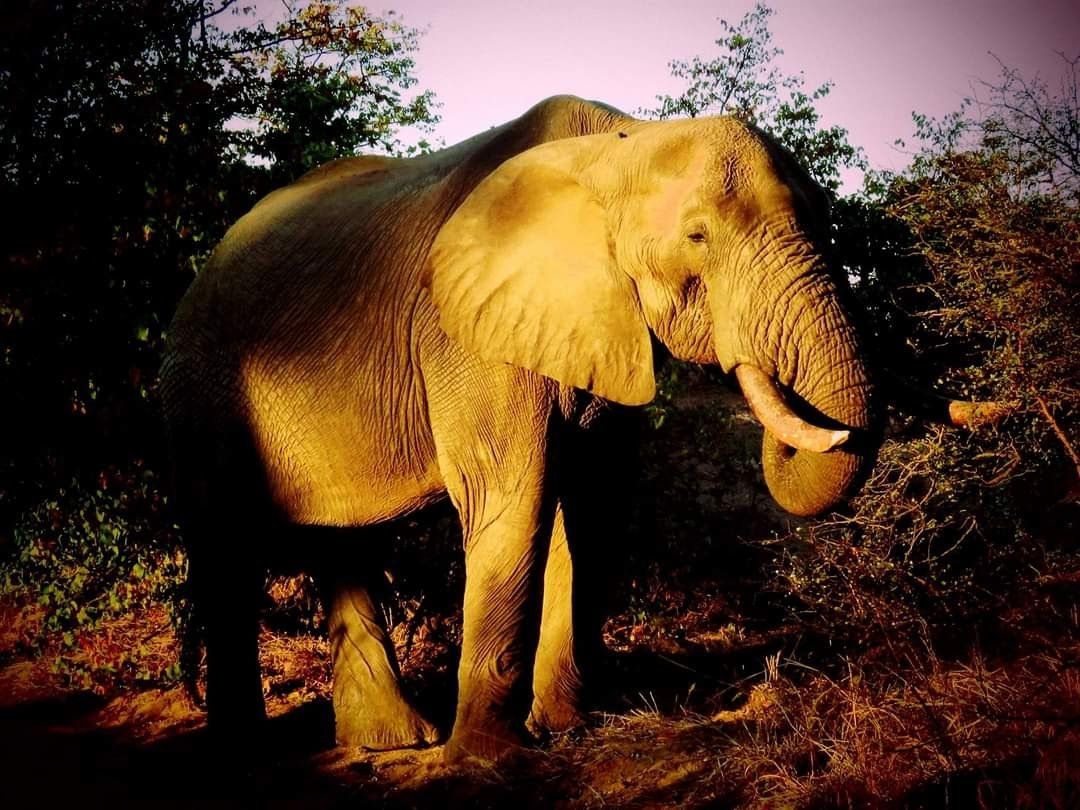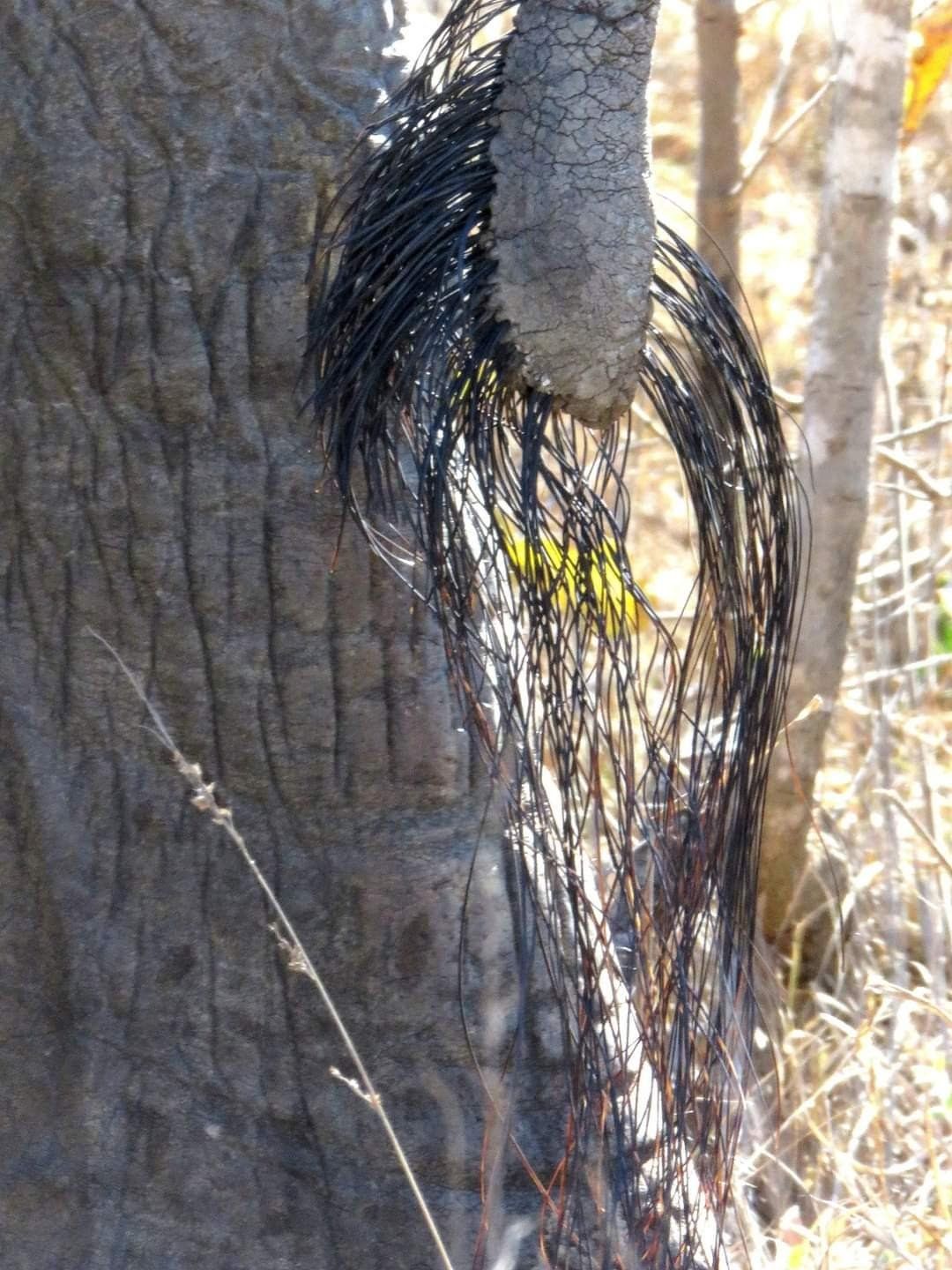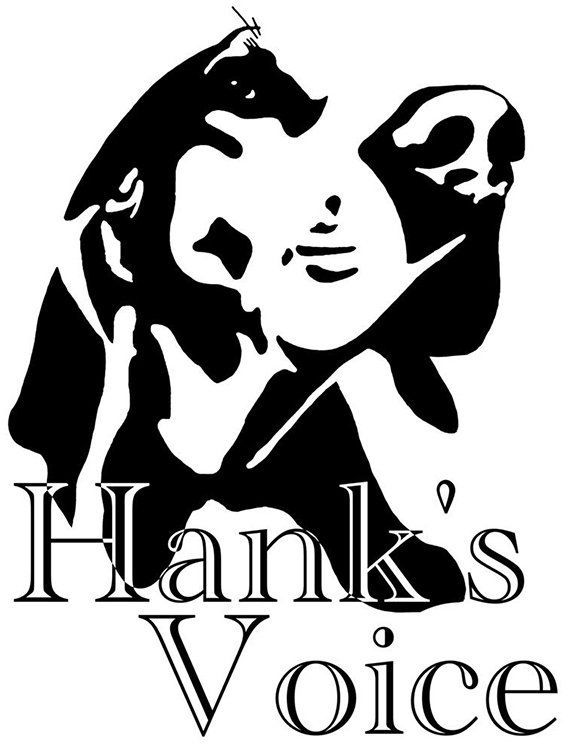THE ELEPHANT(S) IN THE ROOM -- Size DOES Matter

In April 2022, a photo of a legally hunted elephant that was posted on a private Instagram account was leaked into the public domain, quickly went viral, and caused a global stir. Primarily because it was described as being the largest bull shot in Botswana since 1996, and included the specific weight and sizes of the tusks. These dimensions exceeded 100 lbs. of ivory on at least one side, which placed this bull in the tusker category, a superior size range only attained by older elephants and not seen regularly in many elephant populations nowadays.
In this original, now misappropriated post, most people, including many familiar with hunting and/or elephants, would have likely simply looked at the awkward angle photo and concluded that it was indeed a very big elephant. Period. But when the revered, almost legendary standard of 100 lbs. was mentioned, controversy and scrutiny were invited. Why? Because even if it need not be so, hunting elephants is a contentious topic, especially so in Botswana due to the recent lifting of a ban on it. And tuskers, are, whether it is justified or not, considered a sacrosanct category of elephants by many people with varying opinions on hunting.
But does size really matter? And, if so, the size of what, to whom?
The brevity of the original post was initially how size mattered. Trophy hunting is constantly under fire these days by many who do not understand its utilities and merits as a conservation and funding tool in Africa. When such critics see a short post primarily focused on the size of an animal, one which is the biggest of the big, they primarily see hubris on behalf of the hunters. They see a dead animal which they are told is a superior specimen, and they instantly care more about what has been DONE, than what that particular hunt may be DOING for the area it was conducted in, and the communities who may be living there.
The size of their predictably judgmental reactions at viewing such photos without enough proper context attached to them matters greatly. In the absence of including the critical conservation facts, strong, emotional reactions quickly boiled up into the rapid formation of angry global mobs ever-increasing in size, conjuring up the worst stories they could possibly imagine. The photo was eagerly circulated in hateful, accusatory manners, and the untruths swelled in size. And what a shame that was, as only after the large hullabaloo rapidly ballooned to massive proportions, did the important conservation story behind this particular hunt emerge. Unfortunately, non-factual opinions, especially persecutory ones, seem to have a critical mass. Once attained, facts are readily dismissed and become insignificant in comparison to the size of hate and the fiction that is generated by it.
Social and other forms of media feed on such phenomena, manipulating and altering our perceptions of the world, often to the point that we forget that these perspectives may not be fully representative of the truth. That there are real worlds beyond social media and what the journalists and news crews present to us. The size and scope of their often inaccurate and biased claims matters tremendously. Particularly to people who are directly affected by decisions that may be made by masses of people who have no direct connections to the issue at all.
So in the real world, did the size of this bull matter? Yes and no.
Trophy hunting is a typically very selective pursuit, where large males are indeed sought after. But size is not the only consideration, as the ultimate animal to shoot is the post-mature male, who has had the chance to breed. His age is prioritized over his size. In the case of elephants, however, tusk weight does strongly correlate with age. But many aged elephants also have broken tusks due to the rigors of their lengthy lifespans. These animals, because of their advanced age, are also desirable and appropriate trophy quality animals.
Did the size of this bull’s tusks matter to the elephant population? Probably not. Tuskers, due to their enormous dentition, experience difficulty eating, breeding, surviving droughts, and traveling, which adds to their already high energetic costs and stressors, at a time in their lifespans when their last set of molars is wearing down and creating problems with energy acquisition. They also are not very competitive in fighting for the breeding rights to females in estrus, as younger bulls or old bulls with shorter tusks are not only more agile in mounting females and maneuvering whilst fighting, but are also more effective at stabbing an opponent, sometimes lethally.
Does size matter to cow elephants? That seems unlikely. Bulls of breeding age enter a condition of heightened aggression and unpredictable behavior associated with a surge in testosterone levels that is called musth. Akin, somewhat, to the rut in deer. Musth is an energetically costly activity, whose frequency declines as an elephant bull ages. When in musth, a bull typically travels more (sometimes great distances) to hopefully find a cow in estrus, and then must be competitive enough against any challenging bulls to actually mate with her and guard her while she is in a receptive state. The elephant who is today a tusker was likely most able to withstand the rigors imposed by such a mating system when he was in his prime breeding years, then carrying ivory in more so the 50 lb. range or thereabouts.
Did the size of these tusks matter to the gene pool? Scientific papers on the heritability of tusk length are lacking. The tuskers that are known while alive are also not the only ones out there. Bulls in this size category are poached, only some of which may ever be recorded in any way, and are also found dead, of age-related effects and killed by younger, stronger bulls. If a bull lives long enough, has adequate nutrition, and does not break his tusks, it seems likely that attaining tusker status is really not an incredibly rare genetic quality, but more so just an attainable caliber from the culmination of four plus decades of favorable circumstances.
At 50 plus years of age, this bull also had already had chances to pass his genes on. But it’s important to consider additionally that females contribute at least half of the genetic material to any offspring, not all males in any population breed, chromosomal damage and infertility often occurs in aged animals, and offspring produced must be raised to maturity and then produce offspring themselves to make genetic contributions truly count to any gene pool. And even though we humans treasure 100 lb. plus tusks, both as hunting AND photographic trophies, we do not know if our desires to maintain such animals actually translates into anything truly positive for elephants themselves.
Does size matter to the poacher? Nowadays, probably not. Any animal carrying ivory could potentially bring money on the illegal market. To the point that in a few populations, many of the elephants are now tuskless. Not because poachers were shooting single digit percentages of mature or post-mature males each year, like regulated trophy hunting does, but because poachers kill all ages and sexes, with no limit on the numbers, and at any and all times of the year. And killing of this scope and magnitude can indeed deplete entire populations, let alone gene pools.

Does size matter to the photo tourist or photo safari operator? Not hugely, as most tourists are quite delighted to see elephants of any size. Often to a fault, sadly enough, as many tourists enjoy seeing large numbers of elephants, without considering the impacts such overly abundant populations may have. There are, however, a few places where photo tourists specifically choose to go primarily because true tuskers are seen there on a regular basis, such as Tsavo and Amboseli National Parks, in Kenya. Although these animals do generate much revenue, unlike trophy hunting, where one client pays a large sum of money to hunt one elephant, with minimal infrastructure required, the typical photographic model is that many people contribute smaller amounts of money resulting in larger human impacts on the landscape.
Interestingly, about a week after many people were so angered by the tusker legally killed by a trophy hunter, a famous, highly photographed tusker named Tolstoy died in this iconic region of Kenya, from an infected spear wound inflicted by a farmer understandably protecting his crops. His family’s annual, irreplaceable food supply, whose loss was of critically important size to him. Something akin to a virtual funeral was held for this iconic elephant, with many on social media calling for the arrest of the farmer. When an elephant poses such direct threats to local people’s livelihoods, and can result in loss of life as well, do they care how big it is? No. Human wildlife conflict is of constant concern, and in these areas where the photographic industry wants tuskers fully protected, the size of the costs to monitor their movements, mitigate conflict, and provide transport plus veterinary care when needed can be massive.
Conversely, the trophy hunted tusker was a phantom, unknown to the photographic industry. Killed via a legal action that contributed significantly to the remote, rural community within its range. A community that lives, like many in northern Botswana, on or adjacent to marginal lands that are designated specifically for wildlife by the government, but are not suitable for photo tourism. Lands that do not allow villagers to keep livestock, so their only legal option to generate meaningful amounts of revenue and meat is via trophy hunting, utilizing wildlife in regulated manners as valuable, sustainable, renewable natural resources.
Does size matter to these communities? Although rural citizens can and will gratefully utilize elephants of any size, trophy hunters will pay significantly more money to hunt in areas where they are likely to have the opportunity to potentially encounter large-tusked elephants. Because part of the allure of trophy hunting is just that – not the guarantee of any killing, but the opportunity of pursuit in areas demonstrably capable of producing trophy quality animals.
Does size matter to the anti-hunting and animal rights organizations who are very vocal in situations like this? It does seem so. The larger and more renowned an animal is typically translates into claims that these animals are also more rare and more endangered, even if those claims are untrue. It’s a convenient and very effective way to increase donations from people who may be well-meaning but, unfortunately, not well-informed. Collectively, the money from those who are manipulated by untruths builds to impressive sums. Money whose ultimate destination is often not questioned, as it is mistakenly assumed by its donors that it is “saving elephants”, when, in fact, it may more so be ensuring the financial future of the collecting organization instead.
What are the sizes then that ultimately matter? The current size of the elephant population in Botswana. A size, density and concentration coupled with lack of, or novel movements in, areas that is resulting in large scale habitat changes impacting elephants, humans, and many other species as well.
One such enormous impact is the loss of 2000 year old baobab trees in the most popular photo tourist area in Botswana - the Okavango Delta. Iconic trees, ancient behemoths that many people also consider sacrosanct, killed by other icons - elephants. The loss of habitat and subsequent biodiversity, although challenging to fully chronicle without proper historical data, is inevitably happening when ecosystem engineers like elephants become too numerous, in a big way. Excessive in numbers on a scale that trophy hunting itself cannot control.
The size of the impacts of people from other countries who push for legislation such as trophy import restrictions or bans that disincentivize hunting in Botswana or elsewhere also greatly matters. Not all of Africa is suitable for photo tourism, nor do all African residents and their governments desire only one specific utilization of wildlife. When land uses cannot prioritize wildlife as a funding mechanism for their maintenance, they quickly become converted to uses not conducive to supporting wildlife. Other sizes that greatly matter are those of fences and other barriers, water sources, human settlements, cost of translocating wildlife and lack of funding to address all of these challenges. All matter immensely more so than the size of any one elephant.
We can only have as many elephants as we have habitat resources to support. People who insist that more is better instead of what numbers can we support in healthy, sustainable ways are threatening conservation with these attitudes.
The size of the impacts of those hugely upset about tusk sizes is also very important. Many hunting outfitters in Botswana cater to both hunting and photo tourists, and many international hunters support both hunting and photographic tourism. In volatile situations like this photograph precipitated, name and shame campaigns are directed at, and death threats are issued to, outfitters, professional hunters and hunting clients. Boycotts of countries and cancellations of photo safaris are called for. A renewed interest in trophy import bans or restrictions results. All at a crucial time when many dedicated, hardworking people had been making headway in various countries on these issues. Progress that required huge efforts, by many people, only to be potentially jeopardized by the brevity of a post emphasizing size, that angered people who do not know or understand the conservation story behind the photo.
The size of all these very real problems that need solved is not just the largest elephant in the room, it is the most important. How do we truly accomplish effective elephant conservation that also addresses the needs of the people who must live amongst them? Not by saving tuskers, not by banning trophy hunting, not by turning all of Botswana into a photo safari destination, and not by catering to the desires of people or organizations who focus on what they perceive is the problem based mostly upon their own personal preferences.
We solve the problems by first acknowledging the elephants in the room. Not just one tusker, that nobody has seen until it appears dead on Instagram, but entire herds of all sizes of elephants, both literally and figuratively. The true problems that no one wants to mention, even though they are glaringly obvious. The size of these problems and the size of our efforts to effectively address them are the sizes that ultimately matter.


